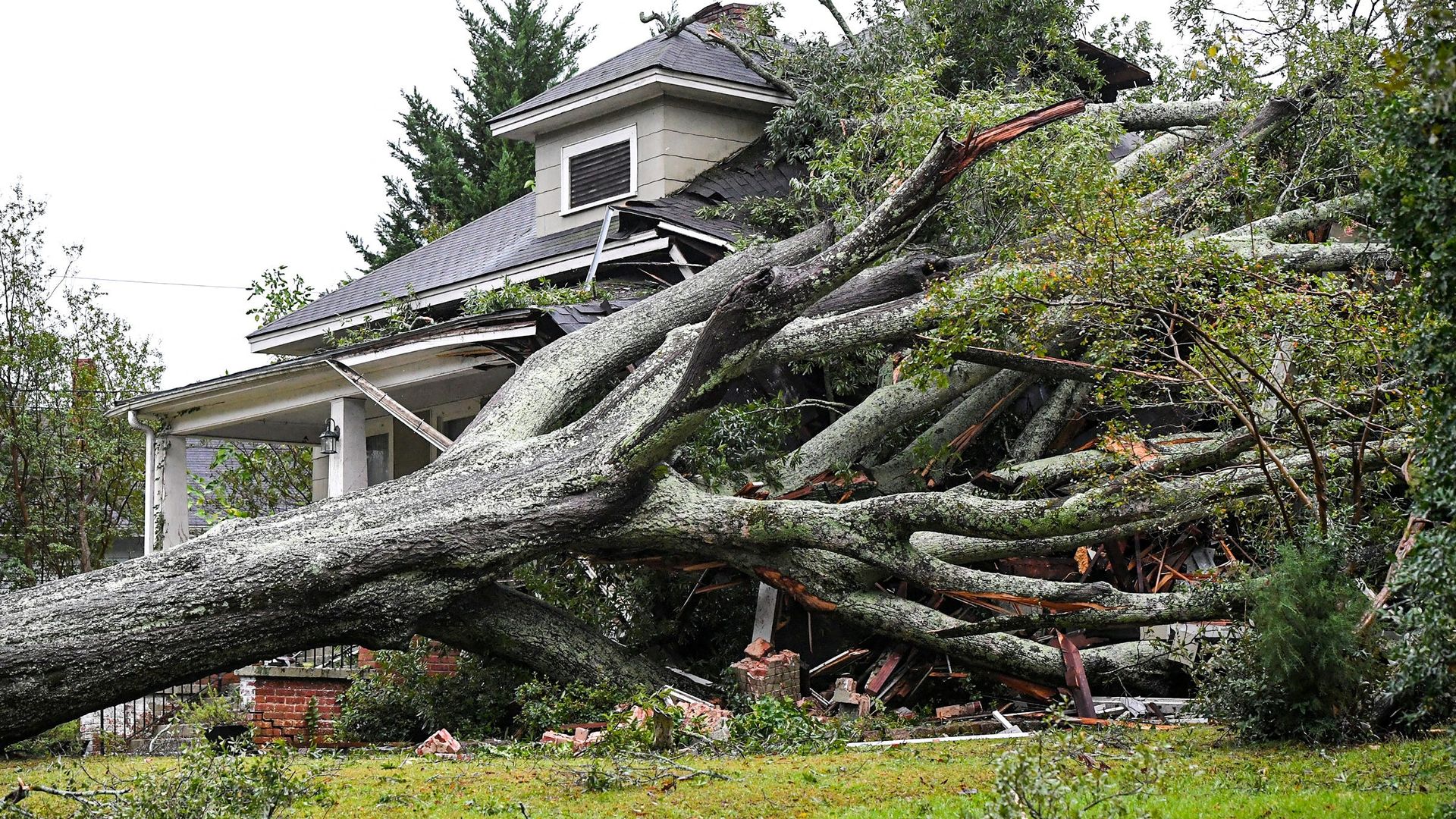
At least 40 people have been killed across four states after Hurricane Helene barrelled its way across southeastern US. Emergency crews are racing to rescue people trapped in flooded homes after Helene struck the coast of Florida as a highly destructive Category 4 storm.
It generated a massive storm surge, wreaking a trail of destruction extending hundreds of miles north.
Please use Chrome browser for a more accessible video player
0:25
Plane rides through Hurricane Helene
Millions are without power in Florida and neighbouring states.Meanwhile, dozens of patients and staff have been rescued from the roof of a flooded Tennessee hospital following a “dangerous rescue operation”.
Please use Chrome browser for a more accessible video player
1:08
One of the hurricane’s worst-hit areas
Tennessee Senator Bill Hagerty said more than 50 people are now safe after becoming stranded on the Unicoi County Hospital.The hospital was engulfed in “extremely dangerous and rapidly moving water”, according to Tennessee’s Ballad Health, making a boat rescue too treacherous.
Image:
Patients and staff have been rescued from a Tennessee hospital roof. (Pic: Erwin Police Chief Regan Tilson)
A police helicopter was ultimately able to land on the roof after other helicopters failed to reach the hospital due to the storm’s winds.Local official Michael Baker told Sky News the flooding was “unprecedented”.
“We’ve never seen anything like this,” he said.
Image:
Steinhatchee in the Big Bend area of Florida. Pic: Reuters
Image:
Flooding has severely damaged property in Atlanta. Pic: AP
As of early afternoon, Helene, which has been downgraded to a tropical depression, was packing maximum sustained winds of 35 mph (55 kph) as it slowed over Tennessee and Kentucky, the National Hurricane Center said.It struck overnight with maximum sustained winds of 140 mph (225 kph) in the rural Big Bend area, the northwestern part of Florida.The National Hurricane Center said preliminary information shows water levels reached more than 15ft above ground in that region.
Please use Chrome browser for a more accessible video player
0:20
Floods surround buildings after hurricane
US President Joe Biden has approved emergency declaration requests from the governors of several southern states affected by Helene.Georgia, Florida, Alabama, North Carolina and South Carolina are being supported by emergency response personnel including search and rescue teams, medical support staff and engineering experts.
X
This content is provided by X, which may be using cookies and other technologies.
To show you this content, we need your permission to use cookies.
You can use the buttons below to amend your preferences to enable X cookies or to allow those cookies just once.
You can change your settings at any time via the Privacy Options.
Unfortunately we have been unable to verify if you have consented to X cookies.
To view this content you can use the button below to allow X cookies for this session only.
Enable Cookies
Allow Cookies Once
Georgia Governor Brian Kemp has said dozens of people are trapped in buildings damaged by the storm, with multiple hospitals in southern Georgia without power.In western North Carolina, Rutherford County emergency officials have told residents near the Lake Lure Dam to immediately evacuate to higher ground, warning “Dam failure imminent”.Meanwhile, Florida Governor Ron DeSantis said the damage from Helene in the area appears to be greater than the combined damage of Idalia and Hurricane Debby in August. “It’s demoralizing,” he said.
Image:
Getting around by kayak is easier than car in St Petersburg, Florida. Pic: AP
Image:
Rescue teams in Venice, Florida. Pic: Venice Police Department
Many stranded in places like Tampa could only be reached by boat, with officials warning the water could contain live wires, sewage, sharp objects and other debris.More than four million properties are without power across Florida, Georgia, the Carolinas, Virginia, Kentucky, Tennessee and Ohio, according to the logging website, PowerOutage.
Why this hurricane season is defying forecasts
Tom Clarke
Science and technology editor
@t0mclark3
Despite Helene’s power, this hurricane season has been more remarkable for its lack of activity.
At the start of the hurricane season, which runs from 1 June to 30 November, sea surface temperatures were (and remain) off-the-charts warm.
It’s this ocean heat that fuels tropical storms.
This combined with a developing La Nina phenomenon led the US forecasters to predict 2024 would be a major hurricane season. Between 17 and 24 storms were expected, with eight to 13 developing into hurricanes.
Hurricane Beryl grazed the coast of Jamaica in July as a Category 5 hurricane. It was the earliest storm of that size ever recorded and was seen as a harbinger of the prediction. But, so far at least, it’s failed to materialise.
There have been just six hurricanes so far this year – slightly below average. But why?
It seems to be due to what’s happening on the other side of the Atlantic where ocean warming forced the African monsoon further north than usual.
This led to catastrophic flooding in central and west Africa displacing millions, but it also shifted the weather system that usually spawns hurricanes and spins them across the Atlantic.
There’s already abundant evidence our warming oceans and atmosphere are making storms more intense – but predicting where they will occur and how often is never simple – and perhaps getting even harder as our planet gets hotter.
Prior to the hurricane making landfall, officials in Florida begged residents to evacuate. The sheriff’s office in rural Taylor County issued a chilling warning to those who refused to leave.”Please write your name, birthday, and important information on your arm or leg in a permanent marker so that you can be identified and family notified,” the post on Facebook said.
Please use Chrome browser for a more accessible video player
0:43
Child and dog rescued from floods
Forecasters now expect the storm to continue weakening across Tennessee and Kentucky.It is feared heavy rain over the Appalachian Mountains could cause mudslides and flash flooding.

